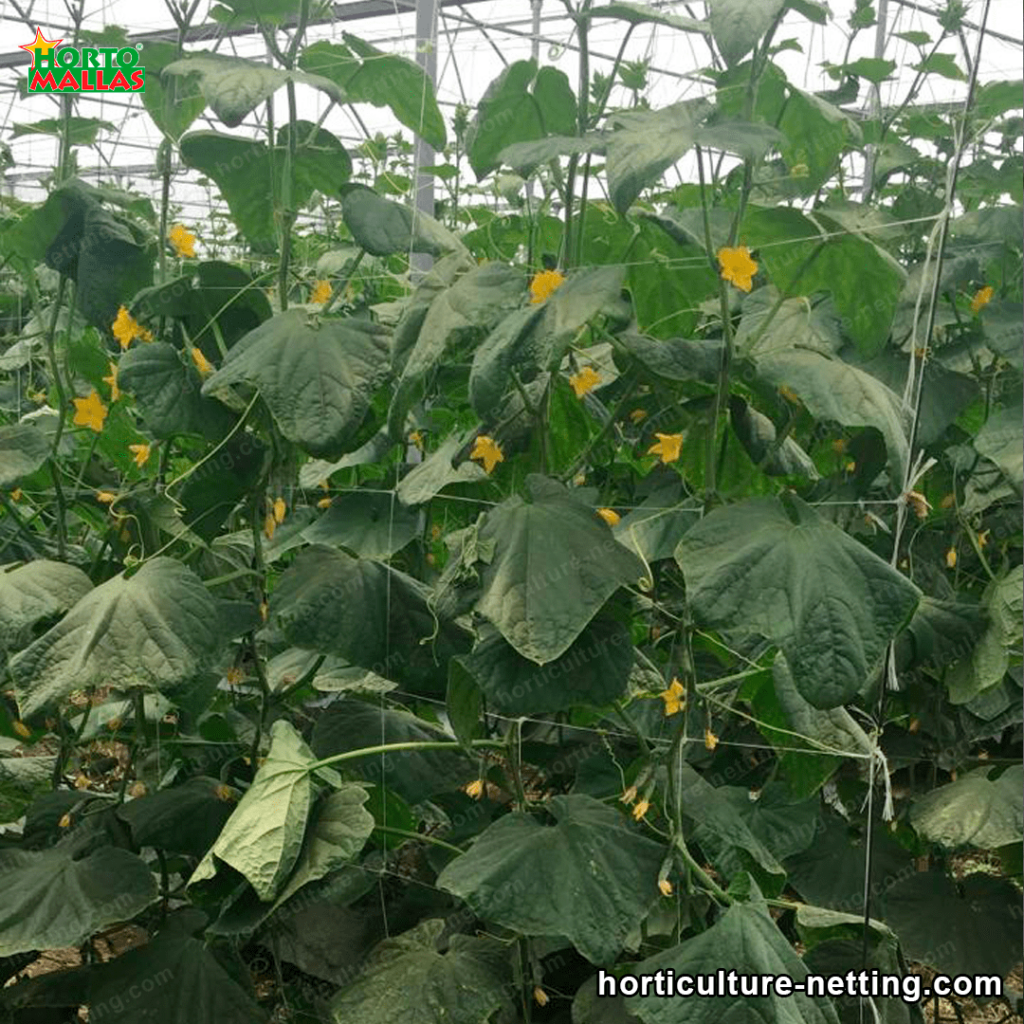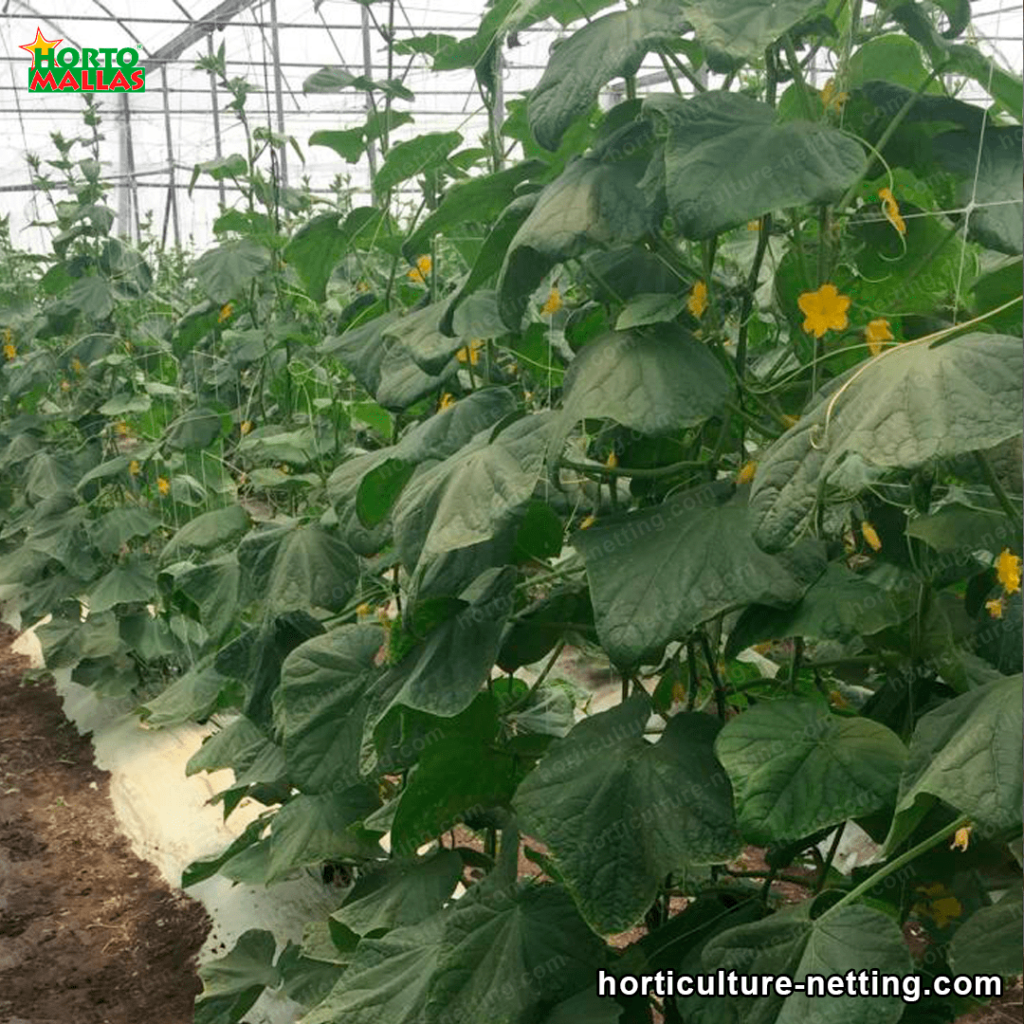Horticultural netting is becoming increasingly attractive to growers as it offers many benefits over traditional cultivation methods.
This novel cultivation technique has become very important in the agricultural industry as it offers a practical, cost-effective and modern solution to increase productivity and improve harvesting results.
The use of horticultural netting offers greater productivity for growers. This is because it allows cultivation on smaller plots, more uniformly, with greater growth control and less time. Plots covered with horticultural netting also offer a small microclimate, with more stable temperatures, higher humidity levels and less solar radiation, which translates into higher fruit and vegetable production. In addition, horticultural netting, by providing greater illumination for the crop, improves the aesthetic performance of fruits and vegetables, increasing their value when marketed. It also provides better crop yields due to pest and disease control by reducing the spread of pests and diseases.
Safety and security are also factors that growers should consider when using horticultural netting. By providing a way to cultivate on sloping land, it avoids the risks associated with manual labor, as well as damage caused by excess water.
A key factor for farmers who choose horticultural netting over other traditional methods is the time and cost savings associated with its use. Land preparation work, planting, irrigation and harvesting are carried out significantly faster, resulting in significant savings for the farmer.
It is becoming increasingly convenient to use horticultural netting for cultivation and harvesting as it offers several benefits. Through advances in this technique, farmers can make the most of their land area to help improve fruit and vegetable production. These advances play a key role in improving productivity, safety and cost savings in the agricultural sector.

Advantages of horticultural netting over rafia
Horticultural products are wonderful and provide people with a lot of benefits. Because of this, horticultural growers have to choose between different types of containers and netting to keep their produce fresh and safe. There are two main options that growers use to net their produce: Horticultural netting and raffia. Two materials each with their own advantages and disadvantages. Horticultural , a nylon-based material used in agriculture, acts as a containment system comprising small meshes with an approximate opening size of 18 millimeters. It forms a critical component of mechanical pest control systems, effectively deterring insects or animals from causing damage to crops. Additionally, it aids in enhancing product quality by preventing fruits from coming into contact with each other.
The main advantages of horticultural netting include: its ease of installation and removal, its weather resistance, its inertness to fire and the length of life that can last up to 15 years. This gives growers better long-term profitability for their crops. Horticultural netting is also durable, not easily damaged and requires no maintenance. Horticultural netting is also strong and lightweight, which means it is a safe investment for growers because it will surely hold the fruits in place.
Unlike horticultural netting, raffia is easy to shape to net any size of fruit. This flexibility means there is no need to purchase intermediate rolls of horticultural netting to accommodate specific sizes and shapes. In addition, raffia holds up to five times longer than a roll of horticultural netting and has greater durability. Raffia can also be washed and used over and over again, which reduces purchase costs.
However, despite its advantages, raffia also has some disadvantages.
Care must be taken with raffia because it can block the sun and make it difficult for the fruit to dry out. This makes them more delicate and makes them wilt faster. One of the advantages of horticultural netting is that it does not produce these effects. We can also consider that raffia is more expensive than horticultural netting, and farmers have to spend large sums of money to acquire it. Finally, it is much less durable than horticultural netting, as it can tear and deteriorate quickly.
Therefore, it is clear that, although raffia has some advantages, horticultural netting is a better option for farmers. Horticultural is more durable, easy to install, safe for produce, inexpensive and weather resistant. These advantages ensure that growers get the best results from their crops. These qualities benefit horticultural producers and consumers in tangible ways.
Future vision for horticultural netting in crop production
These include protection from the elements, improvement in the quality and quantity of produce grown, as well as limiting space so that each plant has optimal room for growth.
As modern technology advances, the use of horticultural netting to increase yields and improve the quality and quantity of produce grown will continue to improve.

One of the areas where special attention needs to be paid is the use of recycled materials.
Recycled materials are a good way to save natural resources and minimize environmental impact. This same technology can be used for horticultural netting to make it from recycled materials to reduce costs. This would not only help lower the cost of the netting, but also make the horticultural netting more environmentally friendly.
One area that deserves special attention is the use of air and soil technologies. Technological advances have made it possible to accurately measure temperature, humidity, sunlight and other environmental factors. This has resulted in the creation of entirely new horticultural netting products, tailored to the specific requirements of each crop. These products can remotely monitor changes in environmental parameters, which can be critical to the success of an agricultural crop.
This is due to their nature, as they are materials that decompose more easily in the environment, which can be of great help during the harvesting and discarding of the surplus grown on the horticultural netting.
The use of smart technologies can help increase the overall performance of the horticultural netting. This includes smart sensors that measure the state of the environment, as well as remote control systems to individualize crop care.
The future of horticultural netting for agricultural crops is promising. Current technological advances have not only led to improved overall crop yields.
Leave a Reply